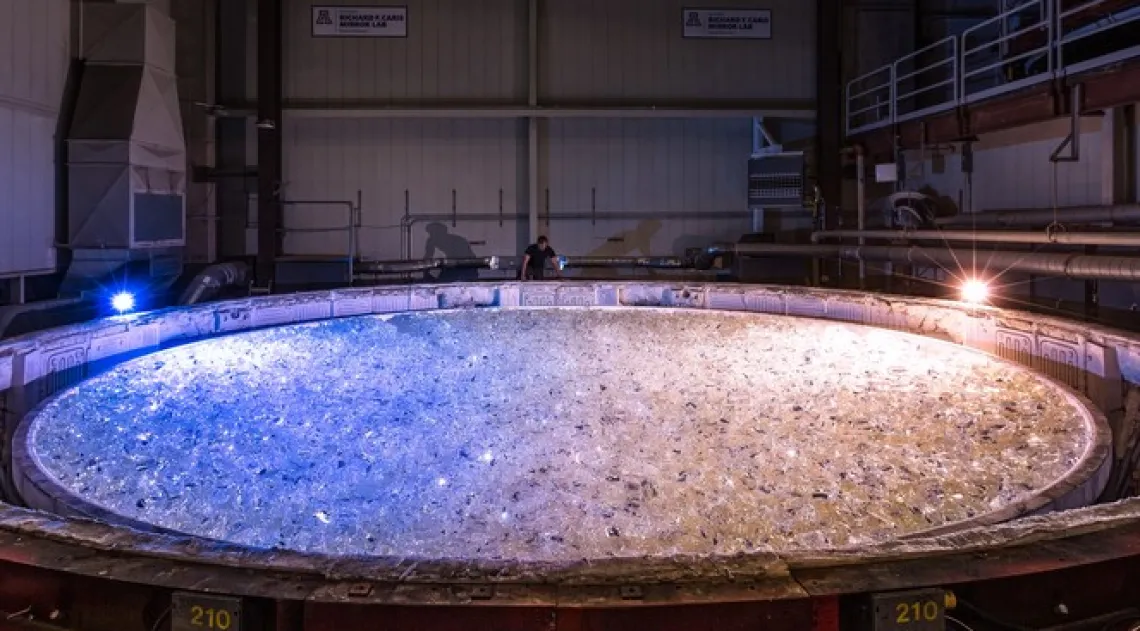Local Roots, Global Headlines

The University of Arizona generated headlines across the globe in 2017. From the installation of a new president to the recovery of a priceless art masterpiece, it has been a remarkable year in Wildcat Country.
Here are 10 UA-related stories that made a major impact in 2017:
1. After 31 Years, Stolen 'Woman-Ochre' Returns, Aug. 11
"Woman-Ochre," a painting by abstract expressionist Willem de Kooning, was stolen from the UA Museum of Art in 1985. More than three decades later, the painting was discovered in Silver City, New Mexico, and returned to its home at UAMA. (USA Today, The New York Times, NBC's "Today")
2. Hands Gather on Deck as UA's Asteroid Explorer Buzzes Earth, Sept. 20
NASA's OSIRIS-REx spacecraft made a close flyby of Earth before shooting toward the asteroid Bennu, and skywatchers had the opportunity to wave goodbye to the probe as it passed overhead. (The New York Times, CNN, The Atlantic, Reddit AMA)
3. Robbins Era Begins With a Full Day at UA, June 1
Dr. Robert C. Robbins began his tenure as the UA's 22nd president on June 1. In his remarks to the Arizona Board of Regents on Nov. 17, Robbins said that the UA's standing as a top-tier research university and its strengths in the arts and humanities, science and technology, interdisciplinary study and student engagement will serve as a springboard for its next phase. (Arizona Public Media, Arizona Daily Star, The Seattle Times)
4. UA Scientists and the Curious Case of the Warped Kuiper Belt, June 20
The plane of the solar system is warped in the outer reaches of the Kuiper Belt, signaling the presence of an unknown Mars-to-Earth-mass planetary object far beyond Pluto, according to new research from the UA. (The Washington Post, Salon, Newsweek)
5. Asteroid Flyby to Help NASA Observation, July 27
For the first time, an actual, but harmless, space rock was used for an observational campaign to test NASA's network of observatories and scientists who work with planetary defense. (USA Today, New York Post, National Geographic)
6. Treatment of Pain Gets the Green Light, March 1
A study by UA researchers revealed that rats with neuropathic pain that were bathed in green LED showed more tolerance for thermal and tactile stimulus. A clinical trial involving people suffering from fibromyalgia is underway. (Reader's Digest, KABC-TV Los Angeles, WebMD)
7. Chunks of Glass, Made Into a Mirror, Will Probe Stars, Nov. 2
At the UA, tools designed to tackle tomorrow's challenges, such as scanning alien planets for signs of life, begin as chunks of glistening glass tucked inside a cardboard box. And now five mirror segments have been cast for the Giant Magellan Telescope. (Wired, Vice, The Arizona Republic)
8. $30M Gift Announced for UA's Biosphere 2, Sept. 20
As the world’s population nears 8 billion, a $30 million endowment from Edward P. Bass will enable Biosphere 2 to address some of the century's most critical questions in food, water and energy security. (The Associated Press, Fort Worth Star-Telegram, Dallas Morning News)
9. Major Advance in Snakebite Treatment, Oct. 11
Giving hope that his treatment may work in humans, the UA's Dr. Vance G. Nielsen has published results showing that his carbon monoxide-iron-based therapy can inhibit snake venom's effects for up to an hour in animals. The treatment eventually could be delivered with a device similar to an EpiPen autoinjector and stocked on ambulances and in first-aid kits. (The Associated Press, Los Angeles Times, Houston Chronicle)
10. Bouldering Envisioned as New Treatment for Depression, May 24
UA researcher Eva-Maria Stelzer and her colleagues found the social, mental and physical endurance of bouldering could be successful psychotherapy for treating depression in adults. (Men's Fitness, Elle (UK), The Huffington Post)

